
Honorable Mention - Top 10 Finalist - Jason Saccoliti - Redesign Your School Athletic Pavilion | 2014 National High School Architecture Competition #135
History: Advanced Technologies Academy, one of the many magnet high schools throughout the Las Vegas Valley, and one amongst hundreds of others throughout the country has been awarded with many prestigious awards since it’s opening in 1994. From the beginning there has been no lack of students eager to take their learning experience to the next level by coming from all walks of life to attend this prestigious school voluntarily taking the extra step to a better education. Within the past 20 years A-tech has been expanding exponentially with a student body in the 2013-2014 school year exceeding well over a thousand students, leading to a facility bursting at the seams however, there has been one problem that has faced the school’s campus since it’s construction in 2002; the gym.
Design Problem: Where Advanced Technologies Academy excels in academia and prestigious awards from across the country, including a two-time Blue Ribbon award, it lacks in a respectable athletic complex suitable for even the most basic high school, let alone a school of such high magnitude. The standalone athletic complex that is currently at A-Tech is considered, by many to be an afterthought of the school’s design. Originally, the school was designed with only a weight lifting facility on the top floor, which was adequate for the school’s student body at the time. However, as stated earlier the school’s attendance rate grew rapidly, so much so that it became necessary to build a gym, along with two other expansions to the school to accommodate the needs of a growing student body; nevertheless, one of the worst problems at the current athletic complex is overcrowding. With students only required to participate in two years of Physical Education, it would appear overcrowding would not be a problem, yet the conditions in the locker rooms are deplorable. First year students are required to use a portable as a locker room because of the lack of lockers, and second year students have to share lockers, and in some more extreme cases use the showers as a changing station without a place to store valuables, rendering the usage of the showers after a workout completely impossible. Overcrowding does not only affect the locker rooms though, the Gym which is currently the only space large enough to house a large group of students is jammed every assembly, requiring the school to host two assemblies to have all students attend. Even worse is the fact of the gym’s acoustics – originally intended solely for indoor basketball, is greatly dampened by other noises within the building. Air conditioning units inside the building generate a lot of noise, which ruins the acoustics of the space while poor speaker equipment dampens the magnitude of the schools orchestra or notable presenters, which have included Bill Clinton, Al Gore, Laura Bush, and Jeb Bush. One of the more embarrassing problems generated, is that A-TECH, a school with a motto of “Academics Plus Technology,” has absolutely no integration of any technology in any of the athletic programs, even though integrating such technology would prove to be a great benefit to track student’s health and fitness. It is time A-TECH has a gym that is not only appropriate for the school’s needs but a gym that matches the school’s prestige -- a gym where students are excited to become healthy and promote fitness.
Design Solution: To accommodate for the school’s ever growing population it is necessary to expand the current building. This new design proposes two new buildings to accommodate for the student body, one for the everyday gym class and the other for special events such as assemblies, tournaments, and public speakers. The main building begins where the previous building left off, by adding extensions such as a second floor, aerobic and strength training wings, a pool, indoor running track, and rock wall students will be able to choose between a variety of exercise options that best fit their needs. The unique feature of this main building however, is the integration of the swimming pool that ties into the main areas of design within the first floor. Water is all around students on the first floor, a rock-climbing wall that surrounds a waterfall cascades down into an artificial river under a glass walkway enclosure that encompasses the hallways, simulating an environment similar to that of some natural rivers that appear in the desert. When students enter the building, they soon forget that they are in a desert – a place that many associate with dry, hot conditions and instead taken to a natural spring a much more encouraging place to exercise in. On either side of the pool two full curtain system enclosed workout environments are take advantage of both the natural movement of heat and Bernoulli’s principle to help cool the building. In the hotter months of the year these two wings of the building have the capability to open up glass panels on the roof hydraulically which allows hot air to rise out of the building and cooler air to sink in. Should there be a slight breeze hot air is then whisked out by means of Bernoulli’s principle quickening the cooling of the space, creating a natural and virtually free cooling system. Finally on the first floor two classrooms are added, one for physical education such as health and the other one for the school’s small, yet equally important orchestra which has been in a portable since the school’s opening. Moving on to the second floor students are again greeted with the rock-climbing wall as well an opening in the center of the floor, which leads down to the pool continuing the central theme of water. On either side of the opening, there are two table tennis and racquetball courts surrounded by an indoor running track. Finally, on the second floor there is an addition of two more locker rooms to ensure that space will no longer be a problem for any student in gym. The second building is mainly designed around holding events, which A-TECH does often, both academic and leisurely. The main façade of the building is a large hangar door put in place specifically for allowing viewers inside the building to view outside sporting events, or allow pleasant air to sweep through when the temperature is just right in the spring and fall. Inside the building visitors are greeted by two box offices and turnstiles on either side of the main gymnasium, which allow for easy sale and distribution of tickets for events such as the quarterly dodge ball tournament. Past that visitors are able to enter into the main gymnasium and take a seat amongst the generous distribution of bleachers more than capable of holding all the student body or go into yet another set of locker rooms. The main gymnasium, designed with acoustics in mind is equipped with sound paneling on either side of the walls and a curved back wall, which increases the audio quality of the space. By adding these two extensions to the current pavilion at Advanced Technologies Academy there is no doubt that students will be excited to exercise and promote fitness.

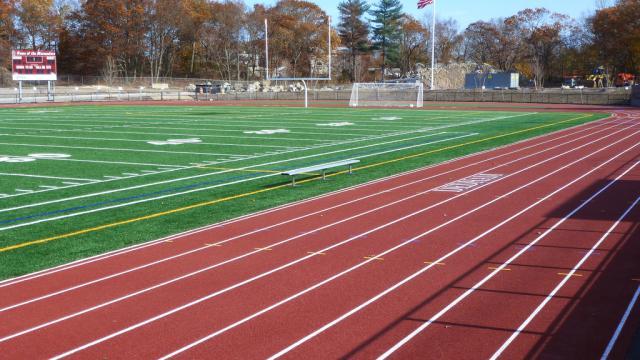





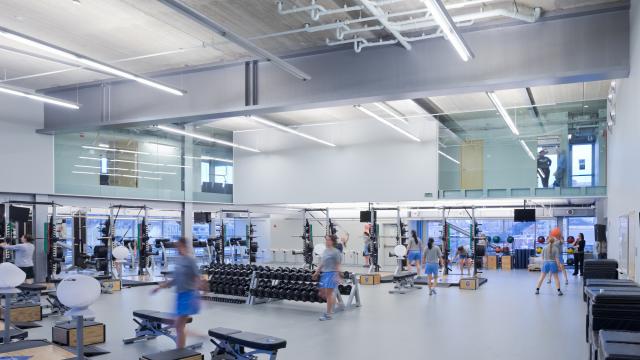
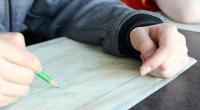





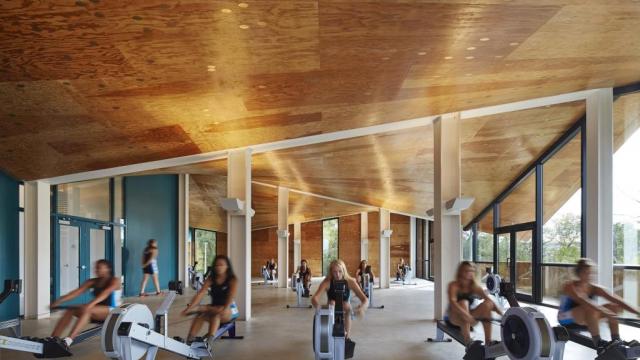







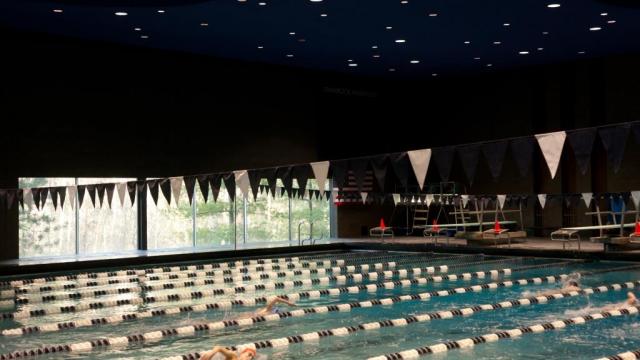






Comments
Your vivid description of the design problems and solutions is well-organized. It is especially effective because you included pertinent facts and insightful observations that enable those unfamiliar with the school (like me!) to clearly visualize the need for your proposed solutions.
You provided a good description of the current conditions and presented a compelling need for new facilities.